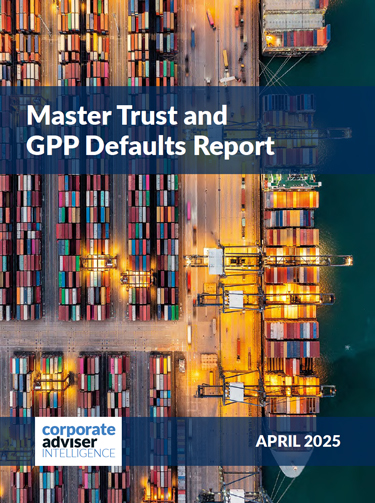SPONSORED CONTENT
Good things don’t happen by chance. They happen by choice. And workplace wellbeing is no exception to that. It should be about equipping employees with the tools and means to make good choices; choices that will positively impact their health and happiness. So, it stands to reason that wellbeing strategy must evolve beyond a set of standalone initiatives, such as awareness day campaigns, to something that takes into account things like employee benefits and work design too.
The Covid-19 pandemic has pushed employee wellbeing right up to the top of the business agenda, with more than eight in 10 companies globally have a wellbeing initiative in place, according to Aon’s latest global survey.1
A greater understanding of the link between employee wellbeing and performance is one reason for this. Researcher Gallup’s figures indicate that employees who score highly on wellbeing charts are also 41 per cent less likely to miss work due to poor health and 81 per cent less likely to seek to change employers within the next 12 months.2
Legal & General’s latest research amongst SME employers adds further weight to this. It found that 83 per cent have a wellbeing strategy, of which, a third (29 per cent) are informal, 15 per cent have no strategy. Yet, whether they have a plan in place or not, an overall average of around 8 in 10 respondents say that a good wellbeing strategy can bring about improvements across all key business parameters; such as recruitment, retention, productivity and culture.3
But, as mentioned, introducing wellbeing initiatives such as fitness challenges and healthier lunch options is not enough to bring about a visible improvement in how an employee feels and performs. To really make a difference, companies need to get everything more integrated. This involves communicating all the various types of support available, in a more relevant and targeted way, as part of a single wellbeing and benefits programme.
Here, we take a look at how this might look across four pillars of wellbeing – emotional, physical, financial, and social.
Emotional wellbeing
According to 2019/20 data from the Health and Safety Executive, 51 per cent of all work-related ill-health, and 55 per cent of all working days lost due to ill-health, are attributed to stress, depression or anxiety.4 So, for employers keen to boost productivity, emotional wellbeing is, or should be, a priority.
Employee assistance programmes (EAPs) have really proven their worth in this area over the last year or so. The EAP service included as part of Legal & General’s group protection benefits, for example, was utilised more than 65,000 times between May 2020 and April 2021, with most receiving a form of counselling to help with personal issues. In other words, the service is being used for the reasons it was originally designed; everyday support, as opposed to mistakenly being seen as a fix-all for everything from temporary anxiety to long-term mental illness.
With lots of people expected to continue working remotely longer term – at least some of the time – EAPs look set to remain central to day-to-day emotional support.
Physical wellbeing
Close to half (42 per cent) of UK businesses have allocated more financial resources to support employees’ physical health since Covid-19 raised its head, figures from financial website NerdWallet suggest[i].
But what they often fail to recognise is that integrating their existing benefits into a programme designed to boost physical health, could help improve usage of relevant services – such as EAPs and second medical opinion services that can be embedded within some group protection products – without increasing their benefits spend.
Financial wellbeing
Financial wellbeing often takes a back seat to other types of wellbeing. Research has also found, just 54 per cent of companies incorporate financial wellbeing into their strategies, compared to 70 per cent for physical health and 67 per cent for emotional wellbeing.
However, money worries can have a huge impact on employees’ ability to perform well – particularly at the moment. So, employers who fail to make their people aware of benefits that can help them to achieve financial peace of mind might be missing a trick. In that sense, it’s worth businesses being aware that Income protection not only can protect salary in the case of long-term illness or injury, but can be extended to cover pension contributions too.
Social wellbeing
Our social wellbeing hinges on how valued we feel within the workplace community. In other words, it’s about human connections and having a sense of purpose; something to get up for in the morning. A culture of wellbeing rests on two-way communication, understanding needs, and providing the kind of support and recognition that helps people thrive.
The communication of an employer’s wellbeing programme, as part of that culture, must be equally ‘human’ in order to help encourage take-up and usage. So it’s important that they share real-life stories – ideally individuals from within the workplace – to demonstrate how benefits and services have helped, via interviews, blogs, or even short videos. And introduce information about benefits into wellbeing activities, where relevant, such as during line manager check-ins.
Above all, this isn’t something to leave to chance. We all have a role to play in helping employees make good wellbeing choices.
Take a look at our wellbeing hub, for tools and resources to help your clients set up and embed a valuable wellbeing strategy in their business.
1 Aon, Global Wellbeing Survey, 2021
2 Gallup, Take care of your people, and they’ll take care of business, 2020
3 Wellbeing at Work Barometer – Legal & General’s research was conducted by Opinium among 1,055 employees (middle managers and below) in businesses with 10-249 employees and 1,011 senior managers in business with 10-249 employees, between 13-20 May 2021
4 HSE, Work-related ill health and occupational disease in Great Britain, 2021
5 NerdWallet, A third of business leaders unhappy with how they handled the pandemic, 20





